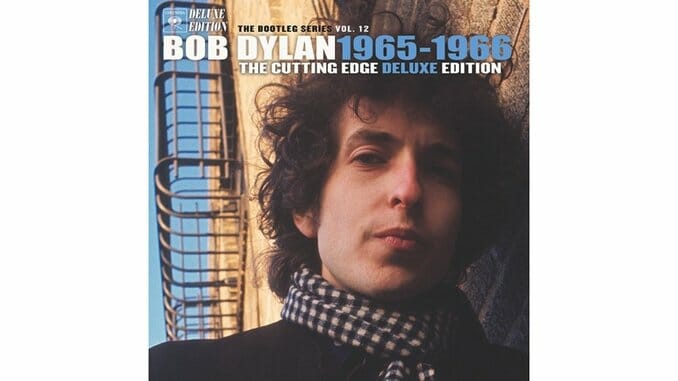Bob Dylan: The Cutting Edge: Bootleg Series Vol. 12

Tomorrow may be a long time, as Bob Dylan once sang, but listening through The Cutting Edge it’s hard to remember that the brash, aggressive, thin wild mercury sound of the music it captures is half a century old.
The Cutting Edge, the 12th Bob Dylan release in the Bootleg Series, is comprised of studio outtakes from the three albums—Bringing It All Back Home, Highway 61 Revisited and Blonde on Blonde—that Dylan recorded during an unprecedented creative spree in 1965 and 1966. Following on the heels of his first four critically acclaimed solo acoustic albums that featured such enduring songs as “The Times They Are A-Changin’,” “Blowing in the Wind” and “Don’t Think Twice, It’s Alright,” this newest full-band electric music driven by Dylan’s surrealistic amphetamine-charged lyrics left many of his earlier fans scratching their heads—if not completely in the dust. This abrupt stylistic change that was most famously exemplified by the violent reaction to his performance at the Newport Folk Festival in 1965 had far more to do with Dylan’s abandonment of traditional song and lyrical structure than his decision to use electric instruments. The expansive, heartfelt anthems like “Masters of War” and “With God On Our Side” that his earlier fans loved had been replaced by stream-of-consciousness rants like “Subterranean Homesick Blues” and “Visions Of Johanna,” an opus from Blonde on Blonde.
In the 14 months between March 1965 and May 1966 with the release of three hastily recorded albums, Dylan successfully kicked the shit out of every pop paradigm that existed at the time. By performing material with vocals that were often cutting and abrasive and lyrics that were indirect and suggestive rather than direct and cloying, and composing musical scores that sounded as if they were played by a Salvation Army Band on acid, it often appeared as if Dylan was daring his fans to try and keep up with him.
The level of intensity that Dylan built during this time could not last indefinitely. The constant recording and seemingly endless touring schedule he had taken on began to take their toll, and when a motorcycle accident sidelined the artist in the summer of 1966, many people came to see this misfortune as an indirect blessing that may have saved his life. In any case, it was a full two years before Dylan returned to the recording studio in 1968 to record John Wesley Harding, a more acoustic album that some saw as a welcome return to form.
-

-

-

-

-

-

-

-

-

-

-

-

-

-

-

-

-

-

-

-

-

-

-

-

-

-

-

-

-

-

-

-

-

-

-

-

-

-

-

-








































